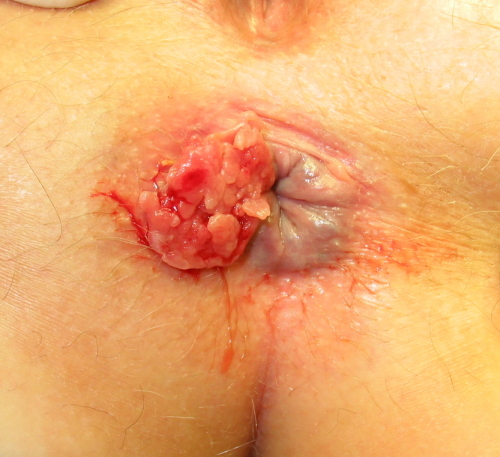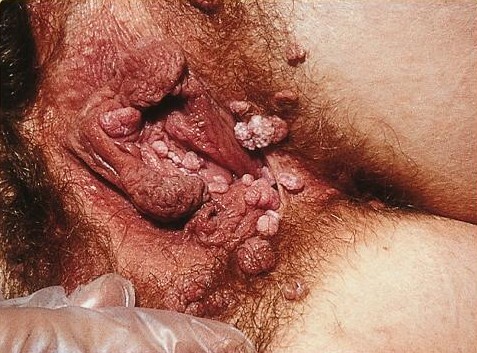|
Anal Pap Smear
An anal Pap smear is the anal counterpart of the cervical Pap smear. It is used for the early detection of anal cancer. Some types of human papillomavirus Human papillomavirus infection (HPV infection) is caused by a DNA virus from the ''Papillomaviridae'' family. Many HPV infections cause no symptoms and 90% resolve spontaneously within two years. In some cases, an HPV infection persists and res ... (HPV) can cause anal cancer. Other HPV types cause anogenital warts. Cigarette smokers, men who have sex with men, individuals with a history of immunosuppression (such as in HIV infection) and women with a history of cervical, vaginal and vulval cancer are at increased risk of getting anal cancer. Vaccination against HPV before initial sexual exposure can reduce the risk of anal cancer. Indications There is no consensus on who should get an anal Pap smear. Some individuals recommend that all men and women who have anal sex should have an anal Pap smear performed regularly. ... [...More Info...] [...Related Items...] OR: [Wikipedia] [Google] [Baidu] |
Pap Smear
The Papanicolaou test (abbreviated as Pap test, also known as Pap smear (AE), cervical smear (BE), cervical screening (BE), or smear test (BE)) is a method of cervical screening used to detect potentially precancerous and cancerous processes in the cervix (opening of the uterus or womb) or Colon (organ), colon (in both men and women). Abnormal findings are often followed up by more sensitive diagnostic procedures and, if warranted, interventions that aim to prevent progression to cervical cancer. The test was independently invented in the 1920s by Georgios Papanikolaou and Aurel Babeș and named after Papanikolaou. A simplified version of the test was introduced by Anna Marion Hilliard in 1957. A Pap smear is performed by opening the vagina with a speculum (medical), speculum and collecting cell (biology), cells at the outer opening of the cervix at the transformation zone (where the outer squamous cervical cells meet the inner glandular endocervical cells), using an Ayre spatula ... [...More Info...] [...Related Items...] OR: [Wikipedia] [Google] [Baidu] |
Anal Cancer
Anal cancer is a cancer which arises from the anus, the distal opening of the gastrointestinal tract. Symptoms may include bleeding from the anus or a lump near the anus. Other symptoms may include pain, itchiness, or discharge from the anus. A change in bowel movements may also occur. Risk factors include human papillomavirus (HPV), HIV/AIDS, receptive anal sex, smoking, and many sexual partners. Anal cancer is typically a squamous cell carcinoma. Other types include adenocarcinoma, small cell carcinoma, and melanoma. Diagnosis is suspected based on physical examination and confirmed by tissue biopsy. Prevention includes avoiding risk factors and HPV vaccination. Standard treatment may include radiation therapy, chemotherapy, and surgery. About 8,300 people are diagnosed a year in the United States, representing about 0.5% of new cancers. Onset is typically after the age of 45. Women are affected more often than men. The number of cases has increased since the 1990s. T ... [...More Info...] [...Related Items...] OR: [Wikipedia] [Google] [Baidu] |
Human Papillomavirus
Human papillomavirus infection (HPV infection) is caused by a DNA virus from the ''Papillomaviridae'' family. Many HPV infections cause no symptoms and 90% resolve spontaneously within two years. In some cases, an HPV infection persists and results in either warts or precancerous lesions. These lesions, depending on the site affected, increase the risk of cancer of the cervix, vulva, vagina, penis, anus, mouth, tonsils, or throat. Nearly all cervical cancer is due to HPV and two strains – HPV16 and HPV18 – account for 70% of cases. HPV16 is responsible for almost 90% of HPV-positive oropharyngeal cancers. Between 60% and 90% of the other cancers listed above are also linked to HPV. HPV6 and HPV11 are common causes of genital warts and laryngeal papillomatosis. An HPV infection is caused by ''human papillomavirus'', a DNA virus from the papillomavirus family. Over 170 types have been described. An individual can become infected with more than one type of HPV, and the dis ... [...More Info...] [...Related Items...] OR: [Wikipedia] [Google] [Baidu] |
Genital Wart
Genital warts are a sexually transmitted infection caused by certain types of human papillomavirus (HPV). They are generally pink in color and project out from the surface of the skin. Usually they cause few symptoms, but can occasionally be painful. Typically they appear one to eight months following exposure. Warts are the most easily recognized symptom of genital HPV infection. HPV types 6 and 11 are responsible for causing majority of genital warts whereas HPV types 16, 18, 31, 33, and 35 are also occasionally found. It is spread through direct skin-to-skin contact, usually during oral, genital, or anal sex with an infected partner. Diagnosis is generally based on symptoms and can be confirmed by biopsy. The types of HPV that cause cancer are not the same as those that cause warts. Some HPV vaccines can prevent genital warts as may condoms. Treatment options include creams such as podophyllin, imiquimod, and trichloroacetic acid. Cryotherapy or surgery may also be an opti ... [...More Info...] [...Related Items...] OR: [Wikipedia] [Google] [Baidu] |
HPV Vaccine
Human papillomavirus (HPV) vaccines are vaccines that prevent infection by certain types of human papillomavirus (HPV). Available HPV vaccines protect against either two, four, or nine types of HPV. All HPV vaccines protect against at least HPV types 16 and 18, which cause the greatest risk of cervical cancer. It is estimated that HPV vaccines may prevent 70% of cervical cancer, 80% of anal cancer, 60% of vaginal cancer, 40% of vulvar cancer, and show more than 90% efficacy in preventing HPV-positive oropharyngeal cancers. They additionally prevent some genital warts, with the quadrivalent and nonavalent vaccines that protect against HPV types HPV-6 and HPV-11 providing greater protection. The World Health Organization (WHO) recommends HPV vaccines as part of routine vaccinations in all countries, along with other prevention measures. The vaccines require two or three doses depending on a person's age and immune status. Vaccinating girls around the ages of nine to thirteen i ... [...More Info...] [...Related Items...] OR: [Wikipedia] [Google] [Baidu] |
Anus
The anus (Latin, 'ring' or 'circle') is an opening at the opposite end of an animal's digestive tract from the mouth. Its function is to control the expulsion of feces, the residual semi-solid waste that remains after food digestion, which, depending on the type of animal, includes: matter which the animal cannot digest, such as bones; Summary at food material after the nutrients have been extracted, for example cellulose or lignin; ingested matter which would be toxic if it remained in the digestive tract; and dead or excess gut bacteria and other endosymbionts. Amphibians, reptiles, and birds use the same orifice (known as the cloaca) for excreting liquid and solid wastes, for copulation and egg-laying. Monotreme mammals also have a cloaca, which is thought to be a feature inherited from the earliest amniotes via the therapsids. Marsupials have a single orifice for excreting both solids and liquids and, in females, a separate vagina for reproduction. Female placental mamm ... [...More Info...] [...Related Items...] OR: [Wikipedia] [Google] [Baidu] |
Medical Tests
A medical test is a medical procedure performed to detect, diagnose, or monitor diseases, disease processes, susceptibility, or to determine a course of treatment. Medical tests such as, physical and visual exams, diagnostic imaging, genetic testing, chemical and cellular analysis, relating to clinical chemistry and molecular diagnostics, are typically performed in a medical setting. Types of tests By purpose Medical tests can be classified by their purposes, the most common of which are diagnosis, screening and evaluation. Diagnostic A diagnostic test is a procedure performed to confirm or determine the presence of disease in an individual suspected of having a disease, usually following the report of symptoms, or based on other medical test results. This includes posthumous diagnosis. Examples of such tests are: * Using nuclear medicine to examine a patient suspected of having a lymphoma. * Measuring the blood sugar in a person suspected of having diabetes mellitus after ... [...More Info...] [...Related Items...] OR: [Wikipedia] [Google] [Baidu] |




